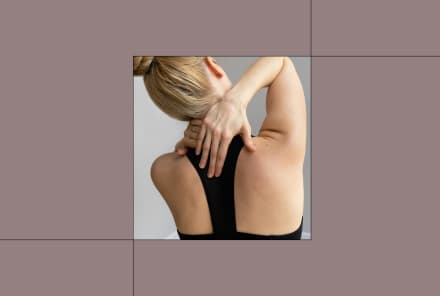Advertisement
Are You Walking All Wrong? Here's What You Should Be Doing

Walking is fundamental. Everyone does it day in and day out, but very few people ever think there's a right or wrong way to walk. We tend to stand up somewhere between 12 and 18 months of age, take our first steps to the cheers of our parents, and are thereafter left to our own devices.
The way we learn to walk is through imitation and motor development. We learn from our parents, grandparents and siblings, who quite possibly had injuries and accidents that have impacted their movement patterns, so we are learning from an imperfect source.
Add to this the fact that we're the first bipedal species to walk upright, and we've been doing it for only a few hundred thousand years. We've had a very short period and little guidance when it comes to getting ambulation right.
Here are three easy ways to improve your walk, starting today.
1. Take shorter steps.
Contrary to most people’s beliefs, short strides will make you go faster than long strides. You just need to take more of them. Too long strides lead to a host of troubles including hyperextension of the knees, which can be a major issue in both walking and standing.
Hyperextension is when a joint has been taken past its normal range of motion. In the case of walking, we hyperextend the knees when our stride is too long and the area behind the knee locks backward with each step we take. If you tend to hyperextend when standing the odds are you will hyperextend when walking.
Long strides also tend to take the legs too far out in front of the pelvis so that we land too forcefully on the heels and fail to keep the pelvis on top of the legs which is essential to successful forward motion. If a stride is too long, the calf has to work even harder in order to propel the body forwards.
You don’t have to take tiny steps. You only need to shorten your stride enough so that you have a more optimal and energy efficient gait pattern.
2. Lean slightly forward.
Ask people if they tend to lean backward or slump forwards when they are standing, and almost everyone will say they have rounded shouldered and are slumped over. People think they slump forward when they walk as well. Frankly, shoulders might round forward but they are most often still behind the hips. When the shoulders are behind the hips this shifts our center of gravity backwards.
So while walking, the legs move too far in front of the pelvis and the torso leans behind it. This can happen due to excessive tucking of the pelvis, and being tight in the muscles at the back of the body, like the hamstrings and the lower back.
When we lean backward to walk forward, we fail to engage essential core muscles that should be involved with every step and we don’t take advantage of the propulsive nature of gravity.
If you take the lower body back and hinge the upper body slightly forward to align with the pelvis it is fairly easy to correct the tendency to lean backward. You want to have proper alignment of ears over shoulders over hips.
3. Alternate your arms and legs.
The body is a self-healing machine and every step is meant to be a spinal twist that stimulates the organs and engages the abdominal muscles in addition to the muscles of the arms and legs.
Each step should include the arms and legs working in opposition with the right arm moving forward the exact distance of the left leg and then that pattern switching for the left arm and right leg.
If the body does this with every step throughout the day every muscle is involved with our gait patterns and the body gets worked out fully and completely.
Unfortunately because many people take too long strides, lean backward to move forward and fail to alternate the arms and legs, we miss out on so many of the healing qualities that are inherent in walking correctly.
It isn’t hard to change the way you walk. Try to employ these three simple tips today and see how your body feels at the end of the day.
Watch Next
Enjoy some of our favorite clips from classes
Enjoy some of our favorite clips from classes
What Is Meditation?
Mindfulness/Spirituality | Light Watkins
Box Breathing
Mindfulness/Spirituality | Gwen Dittmar
What Breathwork Can Address
Mindfulness/Spirituality | Gwen Dittmar
The 8 Limbs of Yoga - What is Asana?
Yoga | Caley Alyssa
Two Standing Postures to Open Up Tight Hips
Yoga | Caley Alyssa
How Plants Can Optimize Athletic Performance
Nutrition | Rich Roll
What to Eat Before a Workout
Nutrition | Rich Roll
How Ayurveda Helps Us Navigate Modern Life
Nutrition | Sahara Rose
Messages About Love & Relationships
Love & Relationships | Esther Perel
Love Languages
Love & Relationships | Esther Perel












